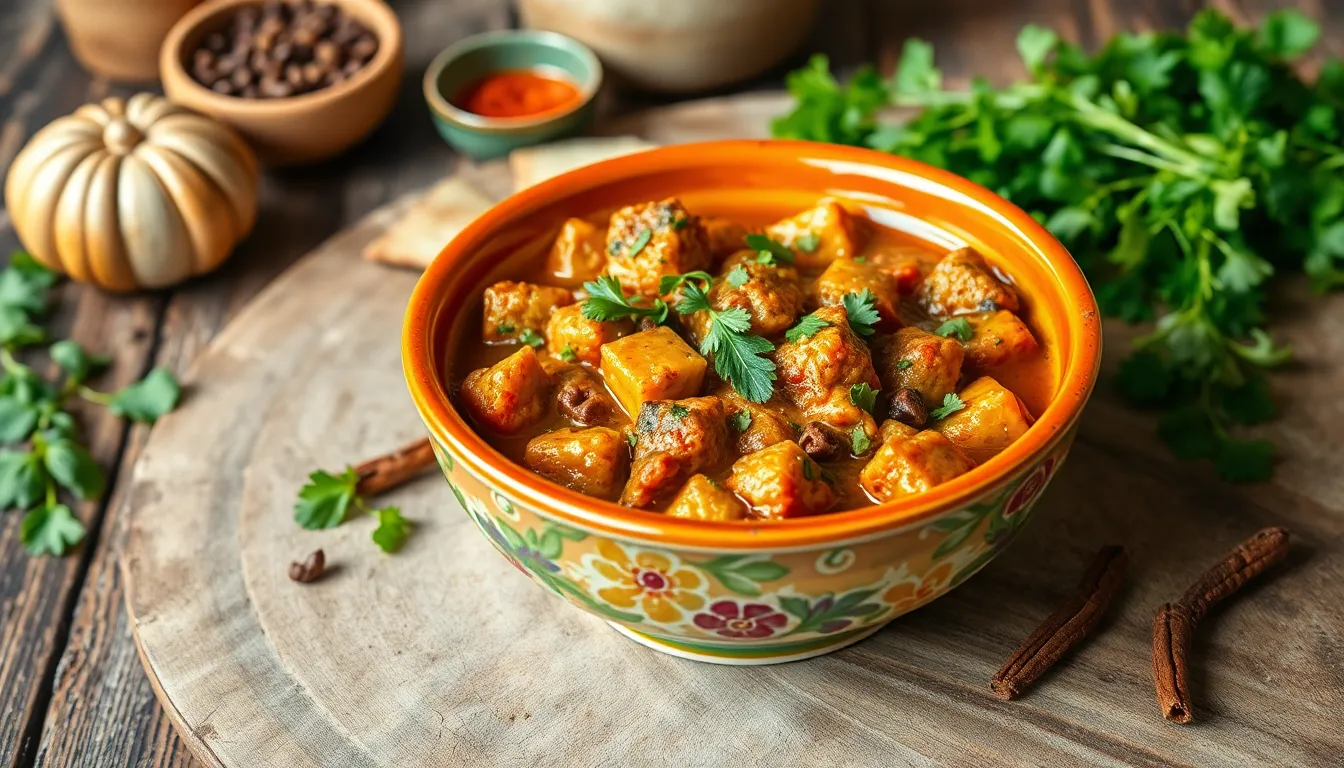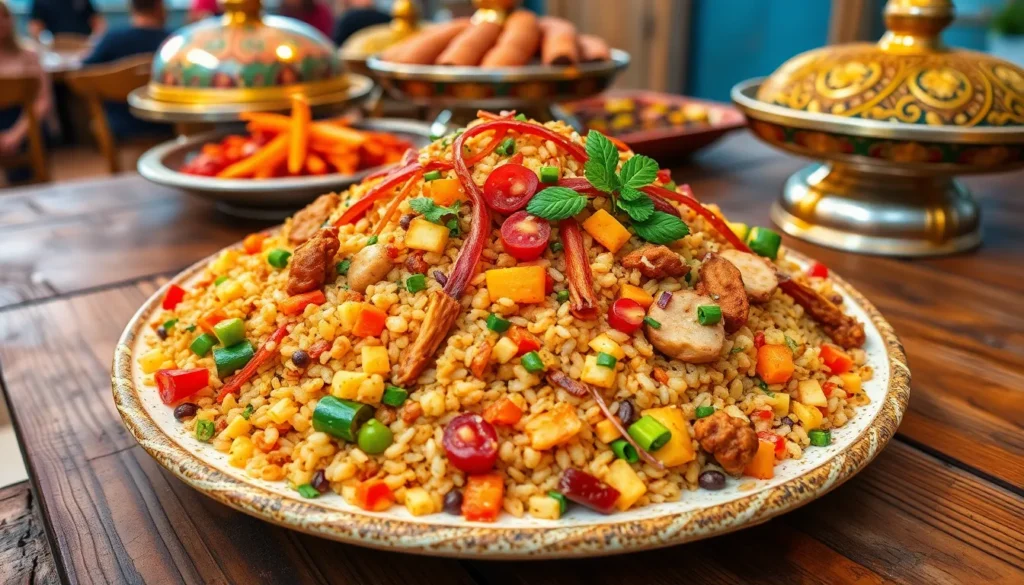Table of Contents
ToggleIn a world where culinary creativity knows no bounds, babemashek stands out as a delightful treasure. This tantalizing dish, often bursting with flavor and personality, has captured the hearts of food lovers everywhere. If you think you’ve tasted it all, wait until you dive into the whimsical world of babemashek. It’s not just food; it’s an experience that’ll have your taste buds dancing and your stomach singing.
Overview of Babemashek
Babemashek stands out as a vibrant dish rich in cultural significance and culinary artistry. Originating from specific regions, it often features a variety of ingredients that blend flavors and textures. Chefs prepare babemashek using core elements such as grains, meats, and an array of spices, all contributing to its distinctive essence.
Popular variations exist, each showcasing unique regional influences. Traditional recipes may include vegetables and legumes, enhancing the dish’s nutritional value and appeal. Diners often savor the dish for its aromatic qualities and its ability to bring comfort.
Culinary experts recognize babemashek for its adaptability, allowing for customization according to personal preferences or seasonal ingredients. Many enjoy the dish during gatherings or festive occasions, appreciating its role in social bonding.
Serving babemashek can involve elaborate presentations, reflecting the effort and passion invested in its creation. Pairing with drinks complements the experience, enhancing the flavors and providing a complete sensory journey. Enthusiasts frequently share recipes, promoting a sense of community around this beloved dish.
In recent years, babemashek has gained traction on social media platforms, with food bloggers highlighting its visual appeal and taste. As a result, it attracts a diverse audience eager to explore culinary traditions. Overall, this dish not only satisfies hunger but also creates memorable moments through its rich heritage and flavors.
History and Origin

Babemashek features a rich history that reflects its cultural roots and evolution in culinary traditions. This dish highlights the artistry of cooking, showcasing a blend of regional flavors and ingredients.
Cultural Significance
Cultural significance surrounds babemashek, emphasizing its role in celebrations and communal gatherings. Families often prepare this dish during special occasions, strengthening bonds through shared experiences. Each region adds its touch, allowing babemashek to reflect local customs and heritage. In many cultures, serving this dish symbolizes hospitality, inviting guests to partake in a flavorful journey. Thus, it not only nourishes but also celebrates unity and tradition.
Historical Timeline
Historically, babemashek’s origins trace back several centuries, emerging in various regions known for their distinctive culinary practices. Early records indicate that local communities began preparing the dish using available grains and proteins. By the 19th century, recipes started to diversify, incorporating spices and vegetables as trade routes expanded. The 20th century saw babemashek’s popularity soar, as chefs began to showcase their interpretations in restaurants. In modern times, social media platforms have played a crucial role in spreading interest, drawing food enthusiasts eager to explore this vibrant dish.
Ingredients and Preparation
Babemashek features a blend of ingredients that contribute to its distinctive flavors and textures. The choice of components significantly impacts its overall appeal and local adaptations.
Traditional Ingredients
Core elements often include grains such as rice or barley, which form the base of the dish. Common proteins consist of meats like chicken, lamb, or beef, adding richness to each serving. Spices like cumin, coriander, and paprika enhance the flavor profile, while vegetables such as carrots and bell peppers provide crunch and color. Legumes, including lentils or chickpeas, add nutritional value. Chefs typically focus on seasonal produce, allowing for freshness and local flavor, which elevates the culinary experience.
Modern Variations
Recent interpretations of babemashek incorporate unique elements reflecting contemporary culinary trends. Quinoa or farro may replace traditional grains, appealing to health-conscious diners. Plant-based proteins, like tofu or tempeh, attract vegan and vegetarian communities. Flavor profiles often expand to include international spices or local herbs, creating exciting combinations. Chefs experiment with presentation styles, serving babemashek in bowls or as layered creations. Creative garnishes like microgreens or edible flowers enhance visual appeal while encouraging a modern dining experience. Each variation maintains the essence of babemashek while inviting innovation and diversity.
Taste and Texture
Babemashek delivers a remarkable sensory experience, combining diverse flavors and appealing textures that captivate food enthusiasts.
Flavor Profile
This dish boasts a bold flavor profile characterized by savory and aromatic qualities. Each serving often features a harmonious blend of spices such as cumin, coriander, and paprika. Fresh ingredients elevate the overall taste, with seasonal vegetables contributing sweetness or earthiness. Proteins like chicken, lamb, or beef enrich the dish with depth, while grains provide a subtle nuttiness. Whenever enjoyed, babemashek presents a unique culinary journey, reflecting the local heritage and traditions of its origins. Variations also introduce international spices, enhancing the overall taste and inviting adventurous palates.
Consistency and Serving Suggestions
Babemashek typically showcases a satisfying consistency, balancing between hearty and light. A well-prepared version may appear fluffy, thanks to the grains soaking up flavorful broths or sauces. Ideal serving suggestions include pairing it with yogurt or tangy sauces for added creaminess. Consider presenting it alongside fresh herbs and lemon wedges, inviting diners to customize their experience with brightness and freshness. The dish excels at gatherings, where its vibrant presentation not only pleases the eye but also sparks conversations. During festive occasions, babemashek brings people together, turning meals into memorable events filled with flavors and stories.
Popularity and Cultural Impact
Babemashek enjoys widespread popularity, thanks primarily to social media and global culinary trends.
Social Media Trends
Platforms like Instagram and TikTok showcase visually appealing babemashek dishes. Chefs and food enthusiasts frequently post recipes, captivating photos and preparation videos. This vibrant presentation draws viewers, offering ideas for personal creations. Hashtags such as #babemashek connect users, fostering a community where culinary creativity flourishes. Seasonal variations and innovative interpretations continue to inspire food lovers around the world.
Global Recognition
Babemashek has gained worldwide attention through culinary festivals and food competitions. Renowned chefs feature the dish on their menus, introducing it to new audiences. Visitors often seek authentic babemashek experiences while traveling, further broadening its appeal. Food blogs and review sites highlight personal stories and regional flavors, enhancing its cultural significance. This growing recognition solidifies babemashek’s place in the global culinary landscape, encouraging more exploration and appreciation.
Babemashek is more than just a dish; it’s an experience that captivates the senses and brings people together. Its rich history and cultural significance make it a staple at gatherings and celebrations, where it fosters connections and shared memories. As culinary trends evolve, babemashek adapts while retaining its core essence, inviting chefs and home cooks alike to innovate and personalize.
The dish’s vibrant flavors and appealing presentation continue to draw attention, especially on social media platforms, inspiring a new generation of food enthusiasts. Whether enjoyed at a festive occasion or a casual meal, babemashek promises to delight and satisfy, making it a cherished part of the culinary landscape.



